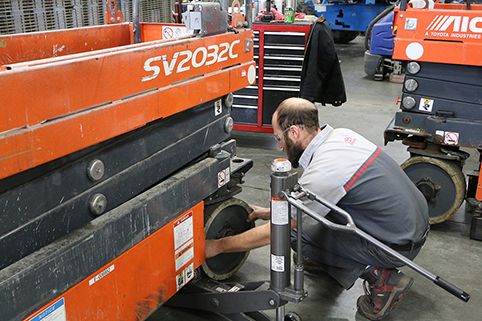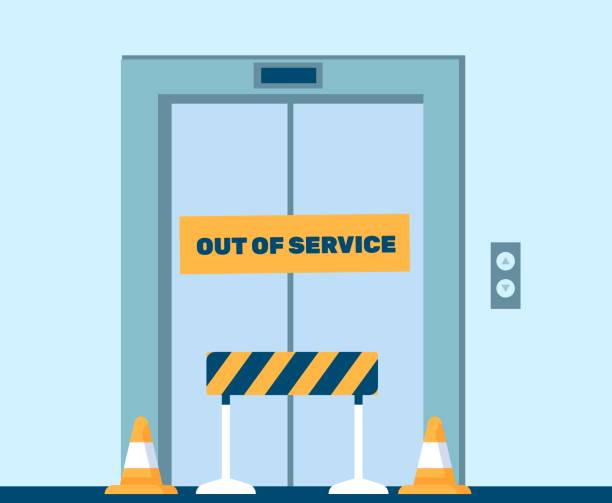System Lift Dimensions Explained: Why They Matter for Lift Servicing
System Lift Dimensions Explained: Why They Matter for Lift Servicing
Blog Article
Specialist Tips for Ensuring Safety And Security Throughout Comprehensive Lift Repair Service Procedures
In the world of detailed lift repair work procedures, security stands as a paramount concern that requires thorough focus to information and adherence to established methods. The detailed nature of collaborating with lifts requires a cautious method to guarding against potential hazards and ensuring the well-being of employees associated with repair work jobs. Among the intricate dance of repairing and keeping lifts, a misstep can have serious repercussions, emphasizing the essential need for expert pointers to browse these procedures with utmost caution and readiness. As the complicated interplay of equipment and human intervention unfolds, a strategic strategy to safety and security ends up being the linchpin for effective repair work procedures.
Safety Gear Requirements
The security gear needs for lift repair treatments are vital to make sure the wellness of upkeep workers. Proper safety equipment not only safeguards workers from possible threats however likewise boosts efficiency and precision throughout repair service jobs. When working on lifts, upkeep employees have to adhere to stringent safety methods by using suitable equipment such as construction hats, safety goggles, handwear covers, steel-toed boots, and high-visibility vests. These products are designed to offer protection against head injuries, eye damages, hand injuries, foot injuries, and boost exposure in the workplace to avoid mishaps.
Safety and security goggles protect the eyes from debris, chemicals, or triggers that might be produced during repair work. By purely sticking to safety gear needs, upkeep employees can minimize dangers and job successfully to maintain and fix lifts.

Tools Assessment List
To ensure the maintenance workers's safety and the proper performance of lifts, an extensive devices assessment checklist is vital prior to starting any repair work treatments. lift service company. This checklist must consist of a detailed assessment of all elements such as cables, pulleys, electrical systems, and safety and security mechanisms. It is essential to check for any type of indications of wear and tear, deterioration, or damages that may jeopardize the lift's architectural honesty or functional effectiveness
Along with mechanical elements, the evaluation checklist need to encompass security features like emergency brakes, limit buttons, and overload sensors. These security systems play an important role in making certain and stopping mishaps customer protection throughout lift procedure.
Furthermore, validating the calibration of control systems, confirming appropriate ventilation and lighting within the lift shaft, and inspecting for any blockages or debris are important action in the evaluation procedure. Regular upkeep and adherence to the tools inspection list not only improve safety and security protocols yet also expand the lifespan of the lift system, minimizing the probability of unexpected failings or costly repair services.
Danger Recognition Methods
Making use of systematic analysis techniques, hazard identification methods are utilized to identify prospective threats within lift repair procedures. One common method is the Work Security Evaluation (JSA), where each step of the fixing process is meticulously assessed to identify possible risks and determine the ideal safety steps to minimize them.

Emergency Reaction Readiness
With a focus on making certain swift and reliable action to unforeseen situations, emergency feedback readiness is a crucial aspect of maintaining safety and security during lift fixing treatments. Prioritizing emergency readiness includes establishing clear interaction channels, designating specific duties and duties, and performing regular drills to test view it reaction times and procedures.
Secret aspects of emergency response readiness consist of having conveniently obtainable emergency treatment kits, fire extinguishers, and emergency situation contact information prominently showed. It is essential to train all workers included in lift repair work procedures on emergency situation reaction procedures, consisting of exactly how to securely evacuate the area in case of a fire or various other emergencies.
Additionally, developing a thorough emergency situation feedback strategy details to lift fixing scenarios can assist lessen prospective dangers and ensure a prompt and coordinated response in the event of an occurrence. Regularly upgrading this plan and evaluating based on lessons learned from past drills or occurrences is necessary to continuously improve precaution throughout lift repair treatments.
Ongoing Safety Training
Constant education and training in safety and security methods is a fundamental part of ensuring the continuous safety of workers during lift repair work procedures. Recurring safety training plays a critical function in More Help keeping workers informed regarding the most recent safety criteria, procedures, and best practices in the sector (lift service company). By providing routine training sessions, workers can remain updated on possible risks, secure job treatments, and emergency situation methods particular to raise repair atmospheres
Normal safety and security training also assists strengthen the relevance of following safety and security standards and treatments in all times. It imparts a safety-conscious frame of mind amongst employees, promoting a society of security within the workplace. Furthermore, ongoing training permits workers to rejuvenate their understanding and skills, improving their preparedness to manage any unpredicted security obstacles that may emerge during lift fixing operations.
To ensure the efficiency of recurring security training, it is important to customize the web content to the particular threats and requirements related to lift repair treatments - platform lift dimensions. Employers must routinely analyze training requirements, supply opportunities for hands-on method, and motivate open communication concerning safety and security problems among all workers entailed in lift repair work procedures
Verdict
In conclusion, guaranteeing security throughout comprehensive lift repair procedures is crucial for avoiding mishaps and injuries. By adhering to safety and security equipment demands, performing equipment inspections, identifying risks, getting ready for emergency situations, and supplying continuous safety training, workers can lessen threats and develop a secure job setting. Focusing on safety and security actions and remaining cautious throughout the repair procedure will certainly aid secure both employees and the devices being serviced.
When working on lifts, maintenance personnel must adhere to strict safety methods by putting on appropriate equipment such as difficult hats, safety goggles, gloves, steel-toed boots, and high-visibility vests. One usual strategy is the Task Safety Analysis (JSA), where each action of the repair service process is very carefully examined to determine potential threats and determine the ideal security steps to mitigate them.Constant education and learning and training in security methods is a basic element of ensuring the recurring security of employees throughout lift repair work treatments.Routine safety and security training likewise helps enhance the significance click this of adhering to security standards and procedures at all times. By following security equipment demands, conducting devices inspections, determining hazards, preparing for emergency situations, and providing continuous safety training, workers can decrease dangers and develop a safe job environment.
Report this page